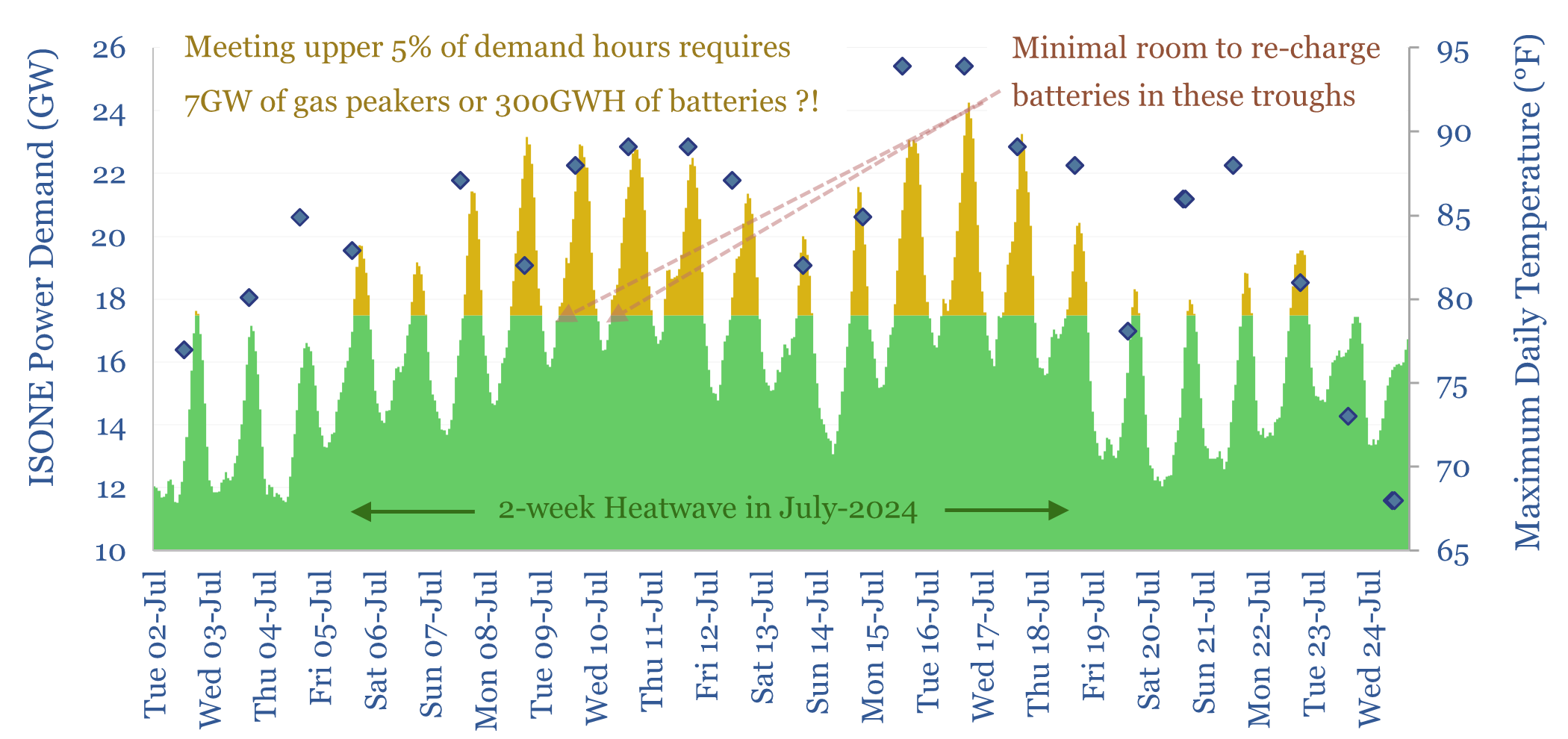Peak loads in power grids are caused by heatwaves (in the US) and cold snaps (in Europe), which last 2-14 days. This 16-page report finds that very large batteries would be needed to ride through these episodes, costing 2-20x more than gas peakers. But the outlook differs interestingly between the US vs Europe.
Power grids are sized to meet peak demand, fully, and somewhat fatalistically, as discussed in our recent research into capacity markets and flattening load profiles. Insights and topics of ongoing debate are discussed on pages 2-4.
A key controversy is whether batteries, whose costs are deflating, can really substitute the need for gas peakers. This could either allow gas turbines to be closed down (for decarbonization), repurposed to power AI data-centers (for competitiveness and improving human outcomes), or just help take the edge off a market for gas turbines that is currently bottlenecked through 2030.
Many studies use stylized assumptions about load profiles to answer this question. Including our own. But it would be better to back-test the utility of batteries on real-world load profiles, for the reasons discussed on page 5.
Peak loads in power grids are the combination of millions of smaller loads. Hence we present data on the peak loads of homes, how some loads are isolated, but heating and cooling correlate across entire networks, per pages 6-7.
A case study for meeting peak loads on ISONE, in New England, during the key July-2024 heatwave, finds that a battery system would cost 10x more than the greenfield cost of gas peakers, per pages 8-11.
A further case study for meeting the peak loads on MISO, during the key August-2024 heatwave, finds that a battery system would cost 2x more than the greenfield cost of gas peakers, per page 12.
A further case study for meeting the peak loads in the UK, during the key January-2024 cold snap, finds that a battery system would cost 3.5x more than the greenfield cost of gas peakers, per pages 13-14.
The forward outlook differs interestingly between the US vs Europe!
Conclusions can be drawn from these case studies, showing how the relative costs of batteries vs gas peakers depend on the amount of peakers that need to be displaced, and regional climate impacts on peak load, per pages 15-16.
